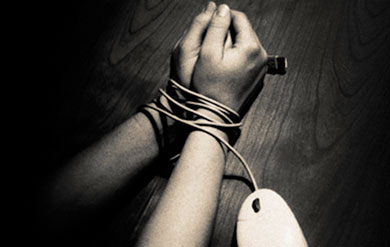The average life expectancy of a digital photograph is not even a second at best. Many photos, just taken, immediately fall into complete obscurity, only to be lost in space and time forever. Well do the math. In 2015, more than one trillion photos were taken. That’s more than 1,000,000,000,000. Who’s looking at all those. If you’d print those at standard 4 x 6-inch size and line them up, you’d make 3,800 trips around the world. That’s a staggering figure, given that only a small percentage of photos taken every year are actually looked at. The lesson to be learned? We’re in dire need of “digital detoxification,” to get rid of what’s a waste and what distracts from making use of our creative senses again.

Being less trigger-happy — and I say this without irony — is not only good for sustainability and the environment, because less energy wasted leaves behind a smaller carbon footprint. Being less trigger-happy is also a Zen-kind of thing. There’s a reason why everything “slow” is hip these days — slow food, slow traveling, slow everything.
Slowing down in fact helps to see again with one’s own eyes, and not just through the filtered and augmented reality our omnipresent camera devices suggest. Or how many precious whole events have you missed because you were so focused on trying to capture the event, only to completely miss out on it?
Just how many is too many. Even back in the film days certainly not every image was a keeper, on the contrary, but the fail rate was lower — due to the facts that shooting simply required more consciousness. Not only did you have to change rolls of film and screw instantaneity, it took some time from exposure to print in hand, so the whole shooting process was more selective. Each and every photo was accounted for and seemed more precious, as there are only so many negatives on a roll of film.
Today, with digital imaging technology, we’re driven by the illusion that making photographs is free, so just snap away! Nothing could be further from the truth. We probably spend much more money on gear and upgrades than any analog photographer would have dared to dream of.
So, with everything getting photographed in great profusion, only for most of the images to be ignored because of their sheer adundance (on average, even great photos are only looked at for a few seconds at max), the answer is not to stop shooting altogether. The answer rather is to value each and every photograph again.
The “spray and pray” approach is a massive killer of creativity. Senseless hit and miss snapping not only prevents the photographer from knowing about how exactly the camera tool in his hand works, it also makes us ignorant to light, to shadows, to composition, as there seems to be no need to get it right in-camera.
Instead of mindless shooting that creates the need to manage the images (edit, label, store, backup, share, in rare cases print), it’s high time to free ourselves up again from constraints and make photography again become an extension of our creative senses.
The approach is simple:
- Slow down. Look around. Wait.
- Make better photos.
- Waisting hours editing again? Let photos breathe and have a life of their own.
- Cull, cull, cull.
- Cull again.
- Cull.
- Print, publish, share.
It’s a “digital detox” process.
Making photography more authentic again.
Also frees up the mind.
A miracle cure, really.
Not only you will be amazed about your photographs.
As Ansel Adams said — how many photos did he take a year?
Twelve significant photographs in any one year is a good crop.


